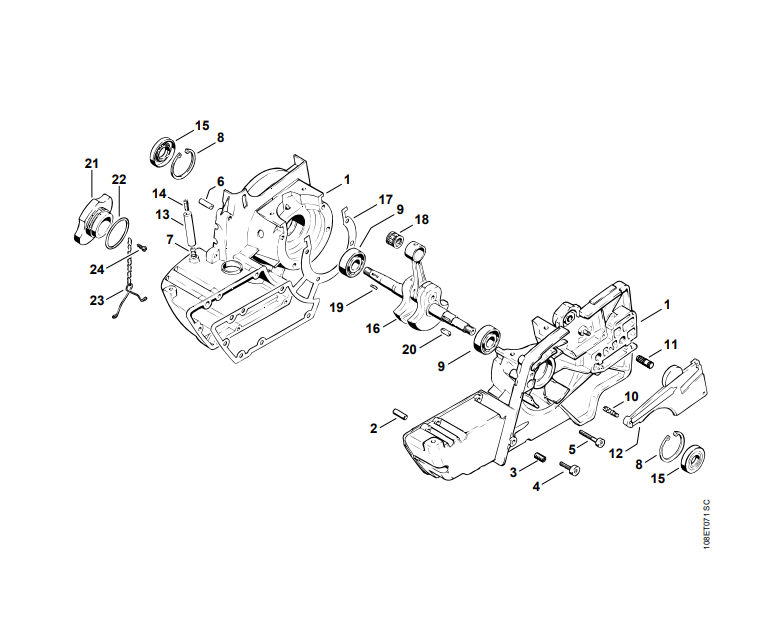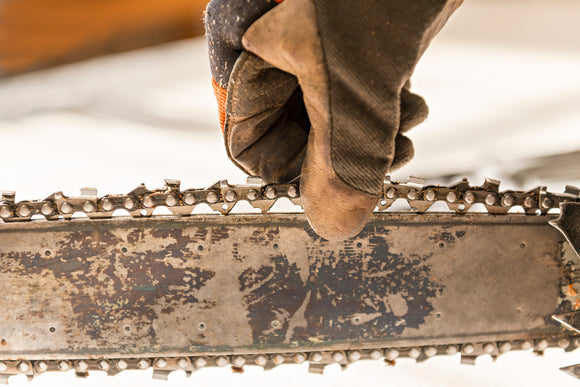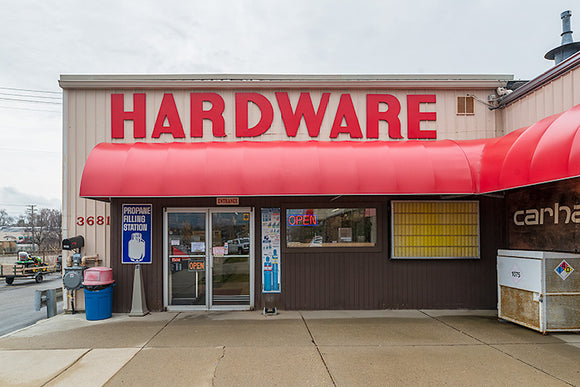
Unveiling the Inner Workings: A Beginner's Guide to Understanding Stihl Chainsaw Parts
Understanding Stihl Chainsaw Parts
When it comes to powerful outdoor tools, few are as versatile and useful as the chainsaw. Whether you're cutting down trees, pruning branches, or simply chopping firewood, a good chainsaw can make the job much easier and faster. And when it comes to chainsaws, few brands are as well-respected as Stihl.
Stihl chainsaws are known for their durability, reliability, and cutting power. But like any tool, they require regular maintenance and occasional repairs to keep them working at their best. That's why it's important to understand the various parts of a Stihl chainsaw, how they work, and how to troubleshoot common issues.
In this article, we'll take a closer look at the different components of a Stihl chainsaw, what they do, and how to maintain them. Whether you're a professional logger or just someone who uses a chainsaw occasionally around your property, this guide will help you get the most out of your Stihl chainsaw.
The Basic Components of a Stihl Chainsaw
Before we dive into the details of specific Stihl chainsaw parts, let's take a look at the basic components that make up the saw as a whole. Understanding these fundamental parts is key to understanding how the chainsaw works and how to maintain it properly.
Engine
The engine is the heart of the chainsaw. It provides the power that drives the chain and cuts through wood. Stihl chainsaws typically use two-stroke engines, which are known for their lightweight design and high power-to-weight ratio. The engine requires fuel, air, and spark to operate properly, and Stihl chainsaws are designed to provide all three in the correct proportions.
Fuel Tank
The fuel tank holds the gasoline that the engine needs to operate. Stihl chainsaws typically use a mixture of gasoline and two-stroke oil, which is premixed before it's added to the tank. The fuel tank should be filled regularly to ensure that the chainsaw has enough fuel to operate.
Air Filter
The air filter is an important component that helps keep dust, dirt, and other debris out of the engine. It's located on the top of the engine and should be checked and cleaned regularly to ensure proper airflow. A clogged air filter can cause the engine to run poorly or even stall.
Ignition System
The ignition system provides the spark that ignites the fuel mixture in the engine. It consists of a spark plug, ignition coil, and other components. If the ignition system isn't working properly, the engine won't start or run correctly.
Chain Brake
The chain brake is a safety feature that helps prevent the chain from rotating when the saw is idling or when it kicks back. It's located on the top of the saw and is typically activated by a lever on the front handle. The chain brake should be checked regularly to ensure that it's functioning properly.
Chain and Bar
The chain and bar are the parts of the chainsaw that actually do the cutting. The chain is a loop of sharp teeth that rotate around the bar, cutting through wood as it goes. The bar is a long, flat piece of metal that supports the chain and guides it as it cuts. Stihl chainsaws are designed to work with specific chains and bars, and it's important to use the correct ones for optimal performance.
Specific Stihl Chainsaw Parts
Now that we've covered the basic components of a Stihl chainsaw, let's take a closer look at some of the specific parts that make up each component. Understanding these individual parts is key to maintaining your chainsaw and keeping it running at its best.
Engine Parts
Cylinder
The cylinder is the part of the engine where combustion occurs. It's a metal tube that's sealed at one end and open at the other, and it contains the piston, connecting rod, and crankshaft. Fuel and air enter the cylinder through the intake valve, and the spark plug ignites the mixture to create a controlled explosion that drives the piston down and turns the crankshaft.
Piston
The piston is a cylindrical piece of metal that moves up and down inside the cylinder. It's attached to the connecting rod, which is in turn attached to the crankshaft. When the fuel mixture is ignited, the explosion drives the piston down, which in turn rotates the crankshaft and provides power to the chainsaw.
Connecting Rod
The connecting rod connects the piston to the crankshaft. It's a metal rod with bearings at both ends, and it allows the piston to transfer its energy to the crankshaft.
Crankshaft
The crankshaft is a metal shaft that's connected to the connecting rod and provides power to the chainsaw. It rotates as the piston moves up and down, converting the linear motion of the piston into the rotary motion of the chainsaw's cutting chain.
Flywheel
The flywheel is a heavy metal disc that's mounted on the end of the crankshaft. It's designed to smooth out the engine's power delivery and provide rotational inertia to keep the engine running smoothly.
Ignition System
The ignition system provides the spark that ignites the fuel mixture in the engine. It consists of a spark plug, ignition coil, and other components. If the ignition system isn't working properly, the engine won't start or run correctly.
Fuel System
The fuel system provides the fuel that the engine needs to operate. It includes the fuel tank, fuel lines, carburetor, and other components. If the fuel system isn't working properly, the engine won't run or may run poorly.
Understanding Chainsaw Engine Parts
Now that we've covered the basic components of a chainsaw engine, let's take a closer look at some of the specific parts that make up each component. Understanding these individual parts is key to maintaining your chainsaw engine and keeping it running at its best.
Cylinder Parts
Intake Valve
The intake valve is a metal valve that opens and closes to allow fuel and air into the cylinder. It's typically located on the side of the cylinder and is operated by the camshaft.
Exhaust Valve
The exhaust valve is the metal valve that opens and closes to allow exhaust gases to escape from the cylinder. It's typically located on the opposite side of the cylinder from the intake valve and is operated by the camshaft.
Piston Rings
Piston rings are metal rings that are mounted on the piston and help to seal the gap between the piston and the cylinder wall. They also help to regulate the amount of oil that's present in the cylinder and prevent it from entering the combustion chamber.
Connecting Rod Parts
Bearings
The bearings on the connecting rod allow it to pivot smoothly as the piston moves up and down. They're typically made of metal and can wear out over time, which can cause the engine to run poorly.
Crankshaft Parts
Main Bearings
The main bearings on the crankshaft support the weight of the crankshaft and allow it to rotate smoothly. They're typically made of metal and can wear out over time, which can cause the engine to run poorly.
Rod Bearings
The rod bearings on the crankshaft support the connecting rod and allow it to pivot smoothly. Like the main bearings, they're typically made of metal and can wear out over time.
Flywheel Parts
Magneto
The magneto is a component of the flywheel that's responsible for generating the electrical current that powers the ignition system. It's a small generator that uses a magnetic field to create electricity.
Ignition System Parts
Spark Plug
The spark plug is a critical component of the ignition system. It creates the spark that ignites the fuel mixture in the cylinder. Over time, the spark plug can become fouled with carbon deposits, which can cause the engine to run poorly.
Ignition Coil
The ignition coil is responsible for generating the high-voltage electrical current that powers the spark plug. If the ignition coil isn't working properly, the spark plug won't receive the necessary voltage to create a spark.
Fuel System Parts
Fuel Tank
The fuel tank holds the fuel that the engine needs to operate. It's typically made of plastic or metal and can develop leaks over time.
Fuel Lines
The fuel lines transport fuel from the tank to the carburetor. They're typically made of rubber or plastic and can become clogged or cracked over time.
Carburetor
The carburetor is responsible for mixing fuel and air in the correct ratio and delivering it to the engine. If the carburetor isn't working properly, the engine won't receive the correct amount of fuel and air and may run poorly.
Buy all the parts listed above for your chainsaw and much more! Get the Sawzilla experience.


